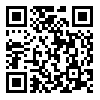Volume 2, Issue 2 (9-2013)
2013, 2(2): 0-0 |
Back to browse issues page
Download citation:
BibTeX | RIS | EndNote | Medlars | ProCite | Reference Manager | RefWorks
Send citation to:



BibTeX | RIS | EndNote | Medlars | ProCite | Reference Manager | RefWorks
Send citation to:
The effect of TiO2 on the electrical strength of silica porcelain insulators. Iranian Journal of Ceramic Science & Engineering 2013; 2 (2)
URL: http://ijcse.ir/article-1-122-en.html
URL: http://ijcse.ir/article-1-122-en.html
Abstract: (13891 Views)
Porcelains have wide applications due to their mechanical properties, high electrical strength and chemical stability. However high electrical strength is the most important among those mentioned properties. The amount and morphology of mullite, the amount and viscosity of the glassy phase and the amount of quarts in the body affect these properties. In this investigation, 1-7 wt% of titania were added to Magharre Sazi Co. routine porcelain. The porcelain bodies were baked in a tunnel furnace. The electrical properties were studied according to IEC672 standard. The structure was studied using XRD and SEM. Linear shrinkage, density and water absorption of the bodies were measured. The results showed that by adding 3 wt% of titania, the electrical strength decreases to 21.015 kV/mm due to excess formation of the glassy phase. Increasing titania to 7% caused the electrical strength to rise up to a higher level of 31.361 kV/mm. Higher level of glassy phase and density and the presence of unsolved rutile should be considered as the reasons. Increase in titania content from 0% to 7% caused the density to change from 2.355 to 2.393 g/cm2. The same phenomenon was detected for linear shrinkage which changed from 7.82 to 8.79%. No water absorption was seen after the appropriate test.
Keywords: silica porcelain insulators, titania, electrical strength, density, linear shrinkage, mullite
Type of Study: Research |
Subject:
Tile, Porcelain, Glaze, Pigment and Ink
Received: 2013/10/12 | Accepted: 2013/09/15
Received: 2013/10/12 | Accepted: 2013/09/15
| Rights and permissions | |
 |
This work is licensed under a Creative Commons Attribution-NonCommercial 4.0 International License. |


